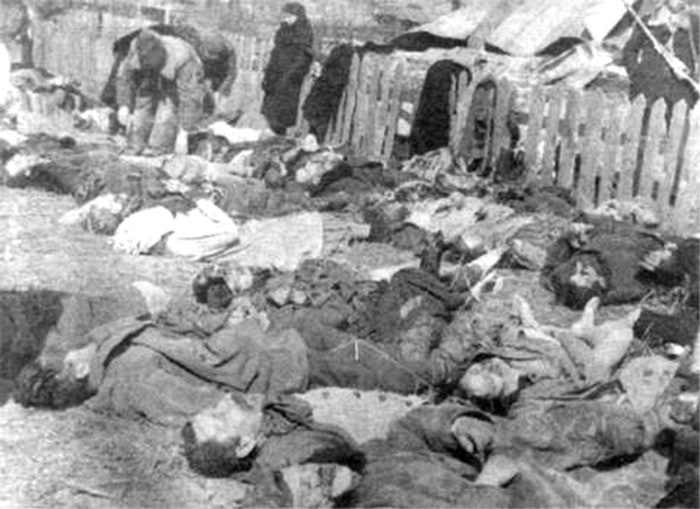The 11th of July 1943 was the most devastating day of the Volhynia (Wołyń) massacre. In the space of 24 hours, 99 towns and villages were attacked, most of them in the counties of Włodzimierz and Horochowsk. The following day, 50 more settlements were attacked.
The Volhynia massacre was carried out by Stepan Badera’s faction of the Organisation of Ukrainian Nationalists. They were supported by the Ukrainian Resistance Army, a group formed of Ukrainian civilians, who participated in murdering their Polish neighbours.
The first mass murder of Polish civilians by the Ukrainian Resistance Army in Volhynia took place on the 9th of February 1943. In the village of Parośla in Sardensk county, 173 Poles were murdered, marking the start of the savagery.
The build-up to these events took place between March and April 1943. As Nazi Germany started losing on the eastern front to Soviet Russia, German-allied Ukrainian police forces switched allegiance to the Ukrainian Resistance Army. Up until this point, these had been the same people carrying out German-sponsored mass-murders.
The first wave of genocide came during Easter Week, as Poles were gathering for prayer. Ordinary people and members of the clergy who were travelling long distances to attend church, and even those inside the churches, were ambushed and murdered.
Bardera’s people burned entire villages. One of their most gruesome crimes came on the night of the 22nd of April 1943 when Bandera’s killers burned down Janowa Dolina and slaughtered approximately 600 Poles.
These crimes reached their bloody climax in July 1943. On the 11th and 12th of July, the Ukrainian Resistance Army orchestrated a coordinated attack on 150 Polish towns and villages in the counties of Włodzimierz, Horochow, Kowelsk and Łuck. The 11th fell on a Sunday, which made it easy to attack and kill people while they were at church; this took place in Poryck (today’s Pawliwka) and Kisielin. Approximately 50 Catholic churches in Volhynia were burned down or destroyed during these events.
These murders were committed with unbelievable cruelty. Many Poles were tortured and tormented in the most gruesome ways. Once the victims were dead, local people would come from neighbouring Ukrainian villages to loot any possessions left behind.
Barbara Waszkiewisz was in the villages Stare Gaje and Nowe Gane the day after the atrocities. In a trembling voice, she explained:
- On the 11th of July the Ukrainians asked people to stay after church to talk and make peace. It was time to unite against the Germans, they said. There was supposed to be a dance. But when the orchestra started playing, the massacre began as well. Bandera’s men surrounded the building. One man got away and informed the (Polish) partisans. We got there the next day to bury the dead. The view was horrendous. Body parts everywhere. Children impaled on fence poles, disembowelled women. That day, 63 people died.
During July 1943, over 520 Polish villages and hamlets were raided and 17,000 Poles were massacred.
[Wróć do tekstu w języku polskim]
Podoba Ci się to co robimy? Wesprzyj projekt Magna Polonia!





